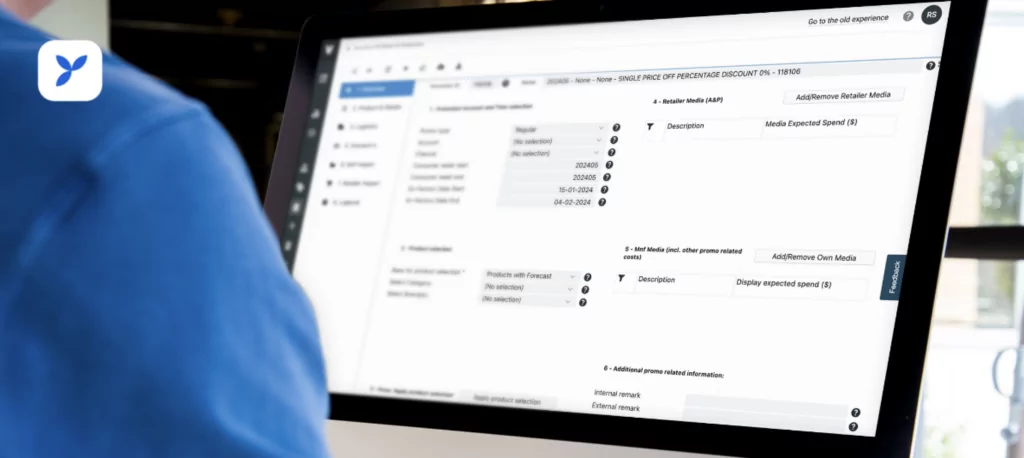
The power of Brand Activation Management in CPG
Every CPG manufacturer knows they make a great product. But they also know that to build the trust and loyalty that drives sales in the long term, they have to ensure that consumers know that product exists.
That’s why marketing and brand activation is essential in building and ensuring each individual product’s long-term success. But modern marketing is complex, and often fragmented. CPG firms look to connect with consumers through traditional mass media, such as TV and radio, and print, and outdoor advertising, as well as instore second placement, materials and events. But they also rely on digital advertising, which is rapidly changing as targeted or even personalised approaches become more mainstream using a multitude of data sources and generative AI.
It’s clear then that brand activations cannot be left to chance. Each brand deserves a carefully managed strategy. Each activity planned, deployed, and its financial impact on sales tracked. This process is crucial to sustainably create consumer loyalty as a one-time marketing activation may drive trial, but often not repeat purchasing. Planning and managing budget in ways enabling sustained investments in activation is ultimately a key factor that drive consistent sales growth.
Multiply that across multiple brands and product lines, and we can begin to appreciate the scale of the challenge facing CPG marketeers.
How having a brand activation plan helps in achieving these objectives?
That’s why it’s essential for a CPG manufacturer to have a centralized marketing activation plan spanning all its brands and products and embracing all the teams and partners involved in bringing those brands and products to market.
The plan should allow marketeers to organize their work, in step with other brand teams and other departments. It needs to supply a complete view of all activations across the portfolio. This is essential to maximise each activation’s impact by ensuring synchronization with other activities and avoiding cannibalization. It will also ensure that budget – whether trade spend or marketing – is not dissipated or misspent.
This both pre-supposes and enables teamwork between different functions and departments, and different brands.
By setting out clear KPIs and results, and making them easily accessible, leaders will gain a bird’s eye view of performance and a solid platform from which to plot their way forward.
A centralised plan will allow team members to harvest information and data which allows them to learn from their activations and strategies. Overall, a centralised plan will uniformise the team’s way of working, saving time in planning reviewing and analysing. This ultimately frees up time to focus on what really matters; optimising campaigns while they are in progress, and plan for the future.
Creating the plan
The fundamental prerequisite for a CPG firm in creating a marketing activation plan is to have an established identity and message.
The next step then is to define the objectives of your marketing activations, in line with SMART principles (specific, measurable, attainable, relevant, and time-bound).
In parallel, as a marketing professional, you must specify the target audience, considering key factors such as demographics, psychographics, needs and preferences. You should also remember the “audience” might be subtly different for each specific activation.
Broader market research will enable deeper insights into both the target audience(s), and into competitors, and the market as a whole, exposing opportunities and challenges.
This will help in selecting which marketing channels and activities will be most effective, whether that’s traditional media such as broadcast and print, digital channels, or instore. Or, most likely, a combination.
Naturally, you’ll need to set a budget considering all the costs of the activation – from production to media – which means you will also need to calculate the expected ROI associated with each.
At this point, ideally, you should check how this spending and the expected results align against your objectives, before moving to implementation and execution.
But this is definitely not the end of the process. You will want to track and measure results, continuously, using all the KPIs you’ve established previously, optimizing, and adjusting as necessary.
This will set you up to fine-tune and reiterate your activation plan, highlighting areas for improvement and innovation. This is a continuous process, as you continuously calibrate your activation strategy to take account of ever-changing marketing conditions and customer preferences.
Using software to create campaigns and evaluate performance
An effective marketing activation plan has many moving parts which must be coordinated and tracked constantly.
It would seem obvious that this can be made easier with software. But doing this presents a series of challenges.
Traditional ERP systems are often thought of as the key source of truth within a CPG organization. But such legacy platforms have their limits. They are difficult to configure, and while the data they produce may be “accurate” it is not necessarily up to the minute. Neither is it comprehensive, if these systems can’t incorporate other information, such as market research or syndicated data.
The different teams within a CPG manufacturer will often evolve their own tools – typically bespoke spreadsheets – which work for their purposes, whether that is managing marketing spend or demand impact or planning as a result of marketing activations. But getting internal and external data into these creates integration problems and the potential for mistakes. Even worse, they may present limited or no options for sharing data, insights, and events with other teams.
And neither type of tool lends itself to establishing a common view across teams and brands, and the events or campaigns they are implementing.
Lastly, they are unlikely to integrate easily with the sort of creative tooling used by marketing professionals, or the subcontractors they work with, are likely to use.
So, effective coordination between teams becomes difficult, as does the sharing of data either on a one-off or ongoing basis.
This shows the limits legacy systems and tools impose on brand activation campaign planning. But it also draws the template for what a brand activation planning system should offer.

What features should marketing activation planning software have?
What would a dedicated marketing activation planning platform look like then?
User-friendliness is essential, and not just because it’s going to be used by marketeers rather than technologists. Rather, it should offer easily configurable automation, so that it can be tailored to the needs of your specific CPG organisation, and to free you up from mundane, error prone manual tasks.
Likewise, workflows and team management should be more transparent and configurable. That means the right people can work together and the right time. It also means that the right approvals are secured at the right time.
Calendaring must be integrated, so that all team members – in marketing AND other functions – can track events, changes, and results in real time. And so, they can ensure activities are coordinated, and do not conflict.
Budgeting and cost analysis should also be integrated, to enable accurate tracking and analysis and deliver insight as well as data. But it must also be easily integrated with other teams tooling, for tasks such as demand forecasting, procurement or revenue growth management, so that all company functions are working on a single version of the truth.
That way, marketing can become truly data driven, optimized, and much more efficient.
Marketing events module by Visualfabriq
Visualfabriq’s Marketing Events Module gives marketing professionals like you the tools needed to manage marketing activations right through the pre, live, and post execution phases of your campaigns.
Configurable workflows, ERP connectivity, and integration with Visualfabriq’s Revenue Forecasting and Optimisation platform, means the marketing organisation has a bird’s eye view of campaigns from start to finish.
But you can also dive down to any required level of detail, accurately tracking budgets, spending, forecasts, and results, across your portfolio and over the lifetime of your campaigns.
This will enable you to sync with other teams and functions across the organization, working autonomously, while enhancing accountability.
The result is better targeted campaigns, more accurate management of marketing spend, and higher performing marketing activations.
Key Takeaway
Marketing shouldn’t be happening in a silo. When marketeers and their colleagues have an integrated view of brand activation planning, execution, and performance, all in one place, everybody benefits.
To find out why Visualfabriq’s Marketing Events Master is used by CPG brands like Mars, Unilever and Heineken among others, head here and download the brochure.

